Behind The Wheel Of The 200-MPH Mercedes-AMG GT
The Porsche 911 GT3-rivaling super-coupe comes loaded with a maximum 730 horses and luxe Mercedes finishes.
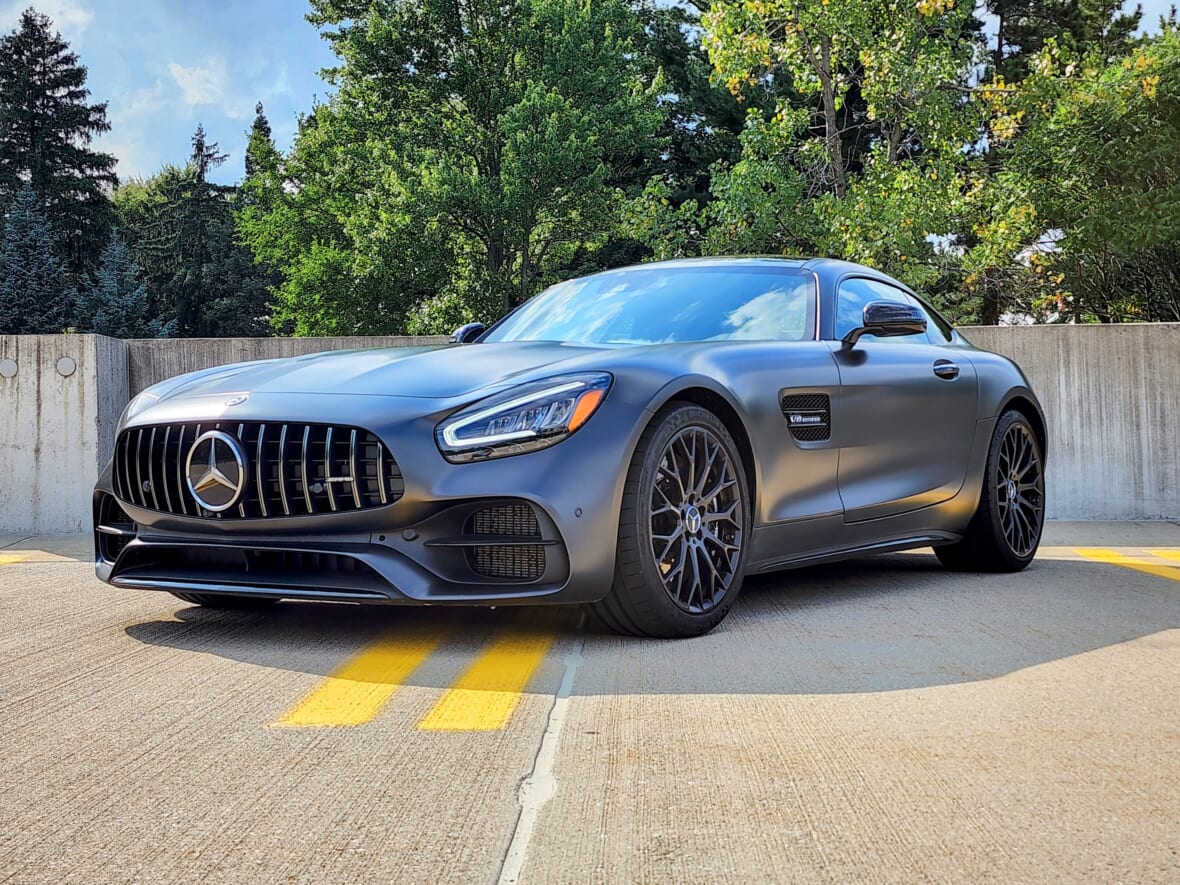
As the old SLS supercar was left to rest, Mercedes-Benz revealed the AMG GT roadster in 2014. The AMG GT came as a smaller, angrier and more performance-oriented model, building a dedicated fanbase of super coupe lovers with particularly opulent tastes.
The AMG GT is available in no less than nine configurations. Out of these, the GT Coupe is the most affordable, although none of the models fall beneath a six-figure MSRP. There are also the GT S Coupe, GTC Roadster, GT C Coupe Edition 50, the Porsche 911 GT3-rivaling GT R and the two competition-oriented models: GT3 and GT4.
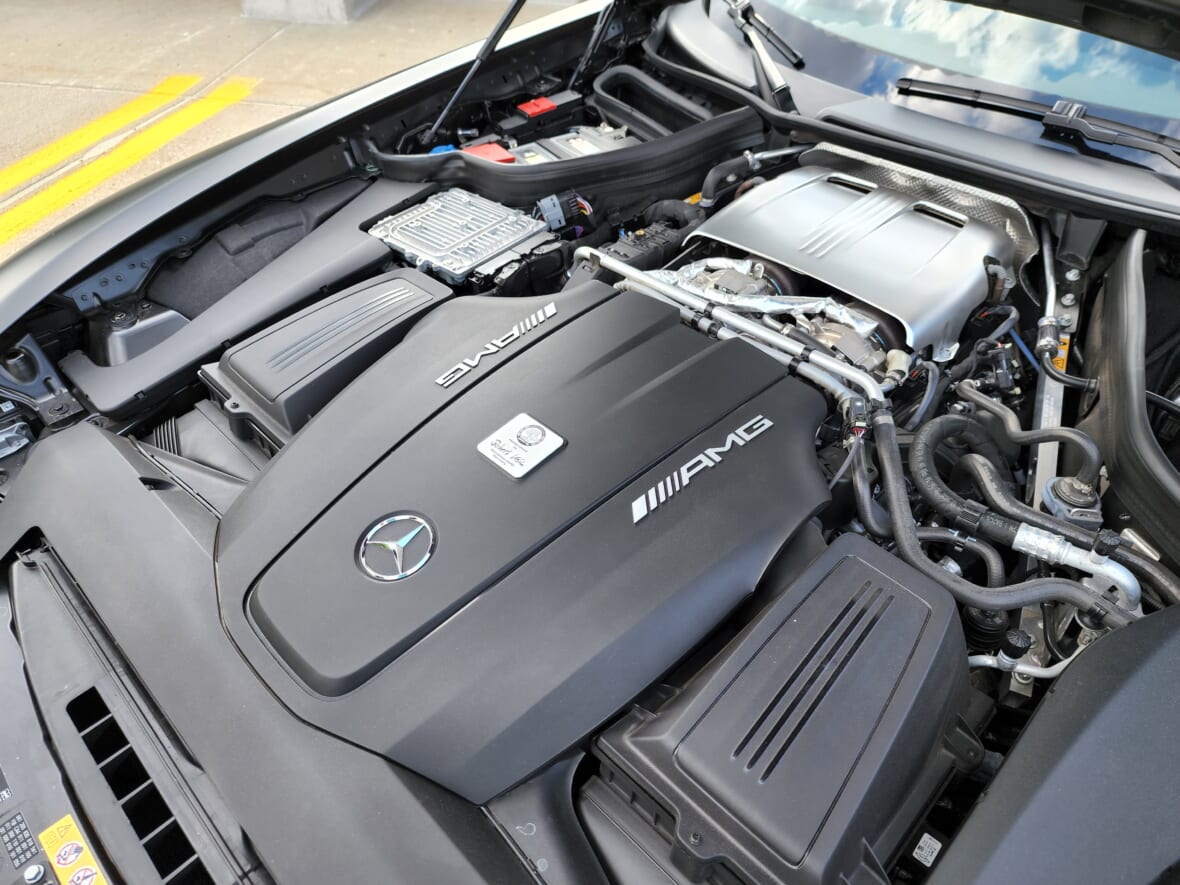
While the GT Coupe goes for $119,650, the range-topping GT Black Series comes at an astonishing $326,050, even though it uses the same turbocharged 4.0-liter V8. The difference between the trims comes down to the output of the hand-built engine—horsepower figures grow as you go up the range.
As with all models from the German automaker’s higher end, the cabin of the AMG GT plays in a league of its own. In pure AMG style, the driving position is as low as possible while your feet go way forward—just like in a racing cockpit. The sides of the cabin are unapologetically split by a high-rise transmission tunnel, allowing both the driver and passenger to sit comfortably and separately. Everywhere you glance, the interior design breathes modernity and high-tech.
The center console, which holds the transmission joystick, is flanked on each side by four round buttons resembling the layout of a V8 engine. A small navigation screen sits above four AC vents, providing access to Mercedes’ intuitive and quick responding infotainment system.
In pure Mercedes-Benz fashion, the configurator allows for endless cocktails of upholstery, wood or carbon trims, as well as the Stealth Black treatment. This midlife refresh of the AMG GT brought over a highly modified V8 with an added lump of performance starting from the base trim.
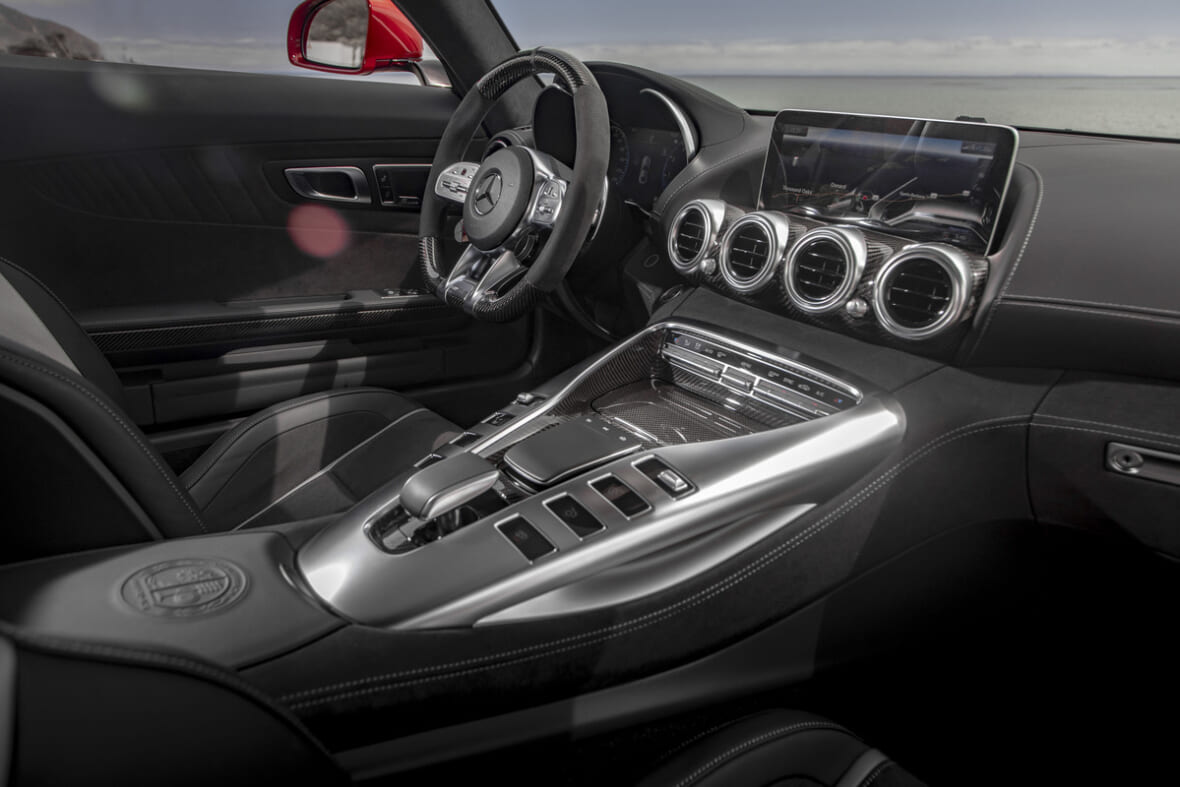
The eight pistons push out a maximum 516 horsepower and 495 pound-feet of torque from as low as 2,100 RPM. Keep the throttle firmly pressed against the floor and the roadster will leap from zero to 60 mph in 3.8 seconds. The GT R trim will shave 0.2 seconds off that time while also topping out at 198 mph.
Regardless of the driving mode, the car sounds proper. However, with the activated sports exhaust and the rev counter kept above the 3,000 RPM mark, the V8 exhaust becomes highly addictive. The AMG GT sounds dramatic, mean, and ready to put up a fight. In all trims, the driver is positioned over the rear axle, with a ton of car left in front of you.
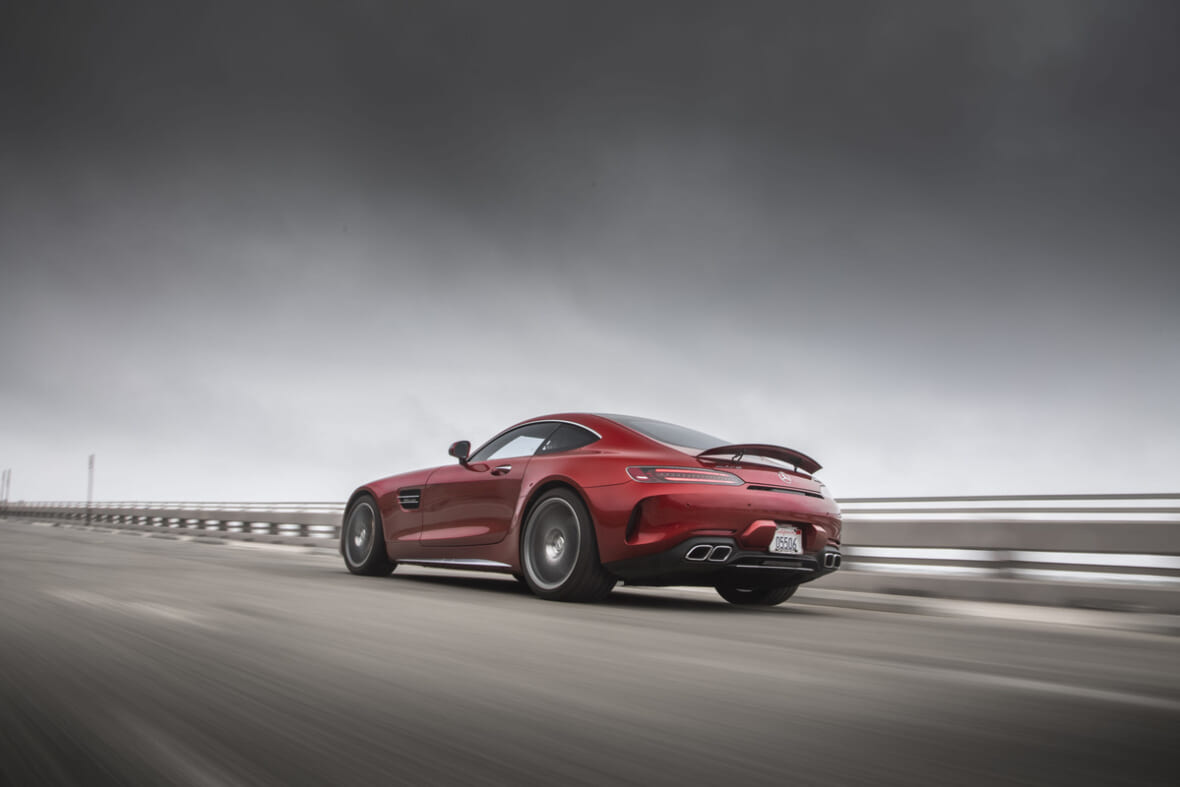
The hood of the AMG GT is extremely long, and it takes a while to get used to it, particularly when parking. Once accustomed to the shape, driving the AMG GT coupe or roadster around the city is a breeze.
In harder corners, the GT C and GT R trims start to shine. With a wider track and better tires, the performance trims stay stable and precise when driving near the grip limit. Thanks to its active aero system and track-oriented tires, the 730-horsepower GT R is by far the fastest of the AMG GT bunch. Irrespective of the power output, the twin-turbocharged V8 found in the AMG GT is strong and responds without delay in throttle input.
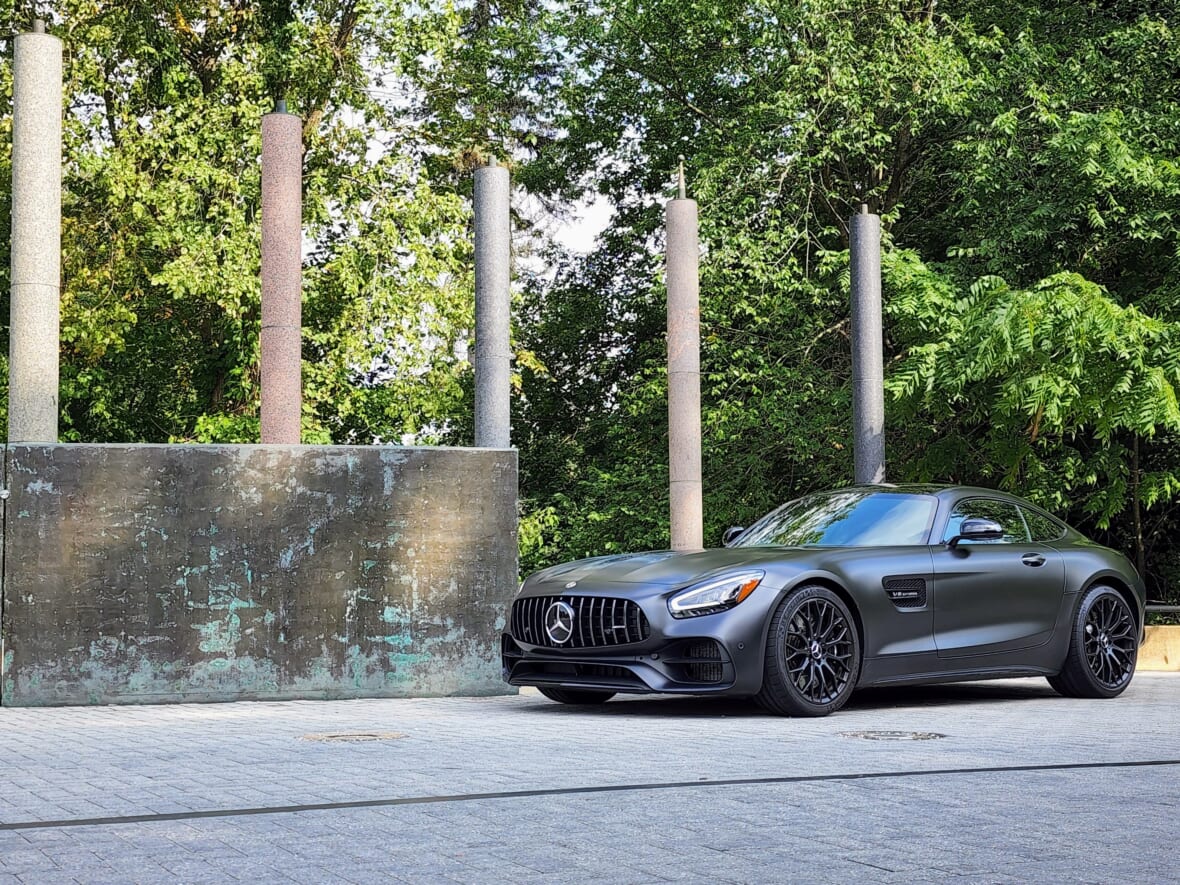
It pops and crackles aggressively when going up the rev counter and it is matched by a similarly responsive twin-clutch gearbox. Overall, the AMG GT proves it sits in a class of its own, putting plenty of pressure on the raciest Porsche 911s. The engine proves modern turbocharged units can sound blissful, the body is muscular and dominating while the interior slaps the signature Mercedes-Benz luxury finishes.
